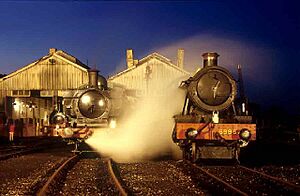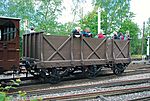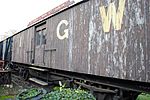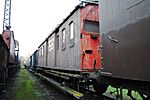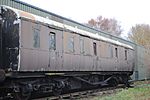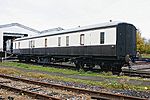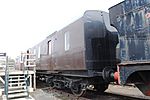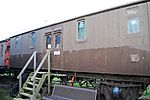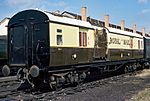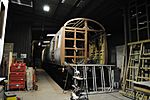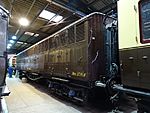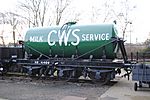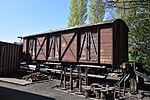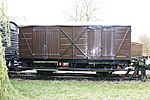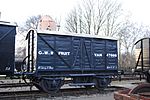Didcot Railway Centre facts for kids
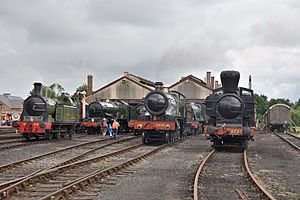
Locomotives 5051, 29 (visiting), 2999, 3738, and others sitting in front of the engine shed.
|
|
| Lua error in Module:Location_map at line 420: attempt to index field 'wikibase' (a nil value). | |
| Established | 1967 |
|---|---|
| Location | Didcot, Oxfordshire, England |
| Type | Operational Railway museum |
| Key holdings | GWR 6000 Class No.6023 King Edward II GWR 4073 Class No.4079 Pendennis Castle GWR Firefly Class Firefly |
| Owner | Great Western Society (site leased from Network Rail) |
| Public transit access | Didcot Parkway |
The Didcot Railway Centre is a cool place in Didcot, Oxfordshire, England. It's a museum and a workshop where old trains are kept and fixed. This spot used to be a big shed for Great Western Railway (GWR) engines. It was a place where locomotives rested and were prepared for their journeys.
Contents
The Story of Didcot Railway Centre
The Great Western Railway (GWR) was a famous railway company. Its founders wanted to create a fast way to travel between London and New York City. This involved both trains and steamships. But the railway also needed to make money. So, it added many routes for passengers and goods. Some people even called it The Great Way Round because of its many detours!
The main line from London Paddington to Reading was quite straight. However, the best route to Bristol would have gone further south. This would have missed Didcot and Swindon. But trains also needed to go to Oxford and the Midlands. This meant the railway had to go a bit more north.
Also, the railway needed to be near a canal. Canals were cheaper for moving coal for trains back then. A landowner named the Marquess of Ailesbury didn't want the railway on his land. So, Swindon became the next best place for a railway junction. This also meant the Oxford connection had to move north, passing through Didcot. The GWR built the first railway line through Didcot in 1839. Its first station opened there in 1844.
Building the Engine Shed
Didcot was a perfect spot for maintaining and storing locomotives. This was because it was halfway between London and Bristol. It also served trains going to Oxford. In the 1800s, a wooden shed was built for the wide-track trains.
Later, in June 1932, a new, bigger shed was finished. It was made of steel and brick. This shed had four tracks for trains to pass through. It also had a repair shop, a place to load coal onto trains, and a sand furnace. A large turntable was also added. This allowed engines to be turned around.
How the Shed Operated
After World War II, the site stayed mostly the same. It was then owned by British Railways (BR). The types of locomotives kept there remained similar. These included Hall, Dukedog, and Pannier class engines.
When the Shed Closed
Steam trains were replaced by diesel trains. This was part of the Modernisation Plan. Because of this, the Didcot engine shed was no longer needed. It closed in June 1965.
Saving the Site
The Great Western Society (GWS) was given the chance to use the old Didcot locomotive depot. They took it over in 1967. In the 1970s, the society got a long-term lease from British Railways. This lease was set to end in 2019. However, it had a clause that meant Network Rail (NR) could end it with just six months' notice.
To make sure the site would be safe for the future, the GWS started talking to Network Rail in 2002. They wanted to either buy the land or get a longer lease. In May 2007, Network Rail said they would sell the site. But this needed approval from the Office of Rail Regulation. There was a worry that the site might be needed for other railway projects.
In September 2008, Network Rail changed its mind. They said the site was no longer for sale. A lease extension was still possible, but it still had the six-month termination clause. The GWS then contacted their local Member of Parliament. They also put their long-term plans on hold. However, in October 2011, the Chairman of the Great Western Society signed a new 50-year lease with Network Rail. This secured the site for many years to come!
The Museum and Railway Centre Today
Today, the Great Western Society has made the site into a fantastic place. Many of the original GWR buildings are still there. It's now a working museum for steam locomotives and railways. It's also a place where trains are repaired. Visitors can even enjoy short rides on the railway lines.
You enter the site from Didcot Parkway station. This brings you to where coal wagons used to go up to the coaling stage. Beyond that is the original 1932 engine shed. Further on are the repair shed and the locomotive works. These areas have limited access for safety reasons. There's also a large Ransomes & Rapier turntable. It was first built for the Southern Railway at Southampton Docks.
The centre often hosts special events. These include days focused on steam trains and diesel railcars. Members of the Great Western Society work hard to keep old locomotives and carriages in good condition. They have even built new versions of old locomotives that were scrapped. Examples include the Firefly locomotive and a 'Saint' class engine.
There is also a small museum and archive on site. It is run by the Great Western Trust. The Railway Centre has been used as a setting for movies. These include Anna Karenina, Sherlock Holmes: A Game of Shadows, and The Elephant Man.
Running Lines for Visitors
There are three short railway lines for visitors to ride on. Each line has a station at both ends.
The Branchline
This line starts at a small GWR station called Didcot Halt. It runs north along the western side of the centre. It ends at a platform called Burlescombe Station. This is next to the transshipment shed. This shed dates back to the days of broad gauge railways. It was used to move goods between wide-track and standard-track trains. The shed was carefully moved to its current spot from nearby.
The Broad Gauge Line
This line uses the wider 7ft 0.25in track. It starts from the transshipment shed. It runs part of the way back down the branchline. The replica of the GWR Fire Fly from 2005 is kept in this shed when it's not running.
The Mainline
This line starts from the Main Line Platform. This platform was moved from Eynsham station. It runs along the eastern side of the centre. It ends at a new platform called Oxford Road Station. This is near the transshipment shed. A building designed by Brunel from Heyford station is being rebuilt here.
How to Get There
The railway centre is surrounded by active railway lines. It doesn't have any road access. You can only get there by walking through a subway from Didcot Parkway station. This station connects the centre by rail to London and many parts of southern and central England.
For a long time, it was hard for people using wheelchairs or prams to get in. This was because there were concrete steps. To make it easier for everyone, the Great Western Society built a ramp in 2023-2024.
Collection of Trains
Steam Locomotives
| Class | Number (& Name) | Image | Status | Notes |
|---|---|---|---|---|
| Robert Stephenson and Hawthorns 0-4-0ST | No.1 Bonnie Prince Charlie |
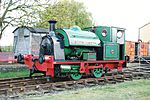 |
Static Display | Built in 1949 for moving wagons in docks. It is waiting for a major repair. |
| George England 0-4-0WT | No.5 Shannon | 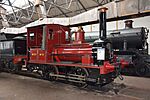 |
Static Display | Built in 1857. It ran in the 1970s, but too many old parts would need replacing to make it work again. It is on display in its 1920s red paint. |
| GWR Steam Railmotor | No.93 |  |
Static Display | Built in 1908. It was fully restored in 2012. It often runs with its trailer carriage No. 92. Its boiler certificate expired in 2021. |
| GWR 1000 Class | 1014 County of Glamorgan |
 |
Under Construction | A replica of a 1946 design. It uses parts from original GWR and LMS locomotives. |
| Kitson & Co. 0-4-0ST | No.1338 |  |
Static Display | Built in 1898. It used to work for the Cardiff Railway. |
| GWR 1340 Class | 1340 Trojan |
 |
Operational. | Built in 1897. It used to work for the Alexandra (Newport and South Wales) Docks and Railway. It is painted in GWR green. It started running again in 2021 after being repaired off-site. |
| GWR 1361 Class | 1363 |  |
Under Overhaul | Built in 1910. It is currently undergoing a big repair, especially on its boiler and frame. |
| GWR 1400 Class | 1466 | 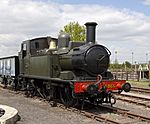 |
Operational | Built in 1936. This was the first locomotive bought by the society. It started running again in 2025 after a repair. |
| Hunslet 0-6-0T | No. 2409 King George |
 |
Operational | Built in 1942 for use in coal mines. It was rebuilt at Didcot and finished in 2022. |
| GWR 2900 Class | 2999 Lady of Legend |
 |
Operational | A 1902/06 design. It was finished at Didcot in 2019. It uses parts from another engine, No. 4942 Maindy Hall. |
| GWR 5700 Class | 3650 | 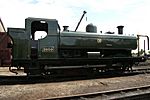 |
Under Overhaul | Built in 1939. Its ten-year repair started in 2018. |
| GWR 5700 Class | 3738 | 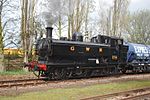 |
Static Display | Built in 1937. It has not been running since 2013 due to problems with its firebox. |
| GWR 2884 Class | 3822 | 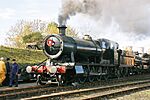 |
Static Display | Built in 1940. It appeared in the Queen music video Breakthru. It stopped running in 2010. |
| GWR 4073 Class | 4079 Pendennis Castle |
 |
Operational | Built in 1924. Its boiler certificate expires in 2031. This engine was brought back from Australia in 2000. It had been there for 22 years. |
| GWR 5101 Class | 4144 |  |
Operational | Built in 1946. Its boiler certificate expires in 2025. |
| GWR 4073 Class | 5051 Earl Bathurst |
 |
Static Display | Built in 1936. It is currently named Drysllwyn Castle. |
| GWR 5205 Class | 5227 |  |
Static Display | Built in 1924. It was bought in 2010 to provide parts for a new engine, No. 4709. It arrived at Didcot in 2013. It is on display as a reminder of how hard it was to save old trains. Some of its parts are being used for another new engine, 3840 "County of Montgomery". The rest of the engine was sold to someone who plans to restore it. It is expected to stay at Didcot. |
| GWR 4300 Class | 5322 |  |
Static Display | Built in 1917. It was used in France during World War I. It stopped running in 2014 due to boiler problems. |
| GWR 4575 Class | 5572 | 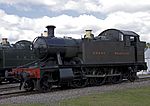 |
Static Display | Built in 1929. |
| GWR 4900 Class | 5900 Hinderton Hall |
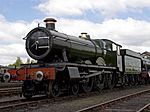 |
Static Display | Built in 1931. |
| GWR 6000 Class | 6023 King Edward II |
 |
Static Display | Built in 1930. It started running again in 2010 after a long restoration. It was originally bought for parts for another engine. Its boiler certificate expired in 2020. It is painted in BR blue. |
| GWR 6100 Class | 6106 |  |
Static Display | Built in 1931. |
| GWR 5600 Class | 6697 | 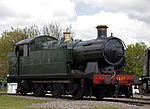 |
Static Display | Built in 1928. This was the only engine of its type bought directly from British Railways for preservation. |
| GWR 6959 Class | 6998 Burton Agnes Hall |
 |
Static Display | Built in 1949. |
| GWR 7200 Class | 7202 | 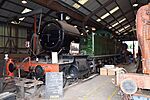 |
Under Restoration | Built in 1934. |
| GWR 7800 Class | 7808 Cookham Manor |
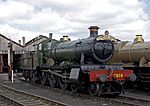 |
Static Display | Built in 1938. |
| GWR Firefly Class | Fire Fly | 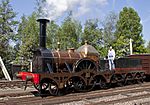 |
Static Display | Built in 2005 as a working copy of an 1840 wide-track engine. |
| GWR Iron Duke Class | Iron Duke |  |
Static Display | Built in 1985 as a working copy of an early wide-track engine. It is on loan from the National Railway Museum. |
| Breakdown Crane | RS1054 | 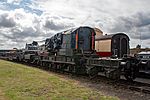 |
Under restoration | Built in 1930. It is a 50-ton steam crane. |
| Steam Crane | 23059 | For restoration | Built in 1954. |
Diesel Locomotives and Other Vehicles
| Class | Number (&Name) | Image | Status | Notes |
|---|---|---|---|---|
| GWR Railcar | No.22 | 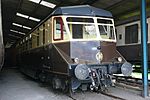 |
Operational | Built at Swindon in 1940. |
| Hunslet | DL 26 | 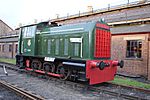 |
Operational | Built in 1957. It arrived at Didcot in 1978. It was the only diesel shunter there for many years. It mostly moves light wagons. It was repainted in 2023. |
| British Rail Class 08 | 08604 Phantom |
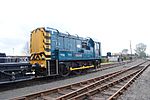 |
Operational | Built in 1959. It was named Phantom. It was sold to the GWS and moved to Didcot in 1994. |
| British Rail Class 14 diesel-hydraulic | D9516 | 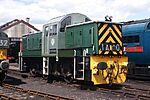 |
Operational | Built at Swindon in 1964. It was bought for preservation and arrived at Didcot in 2014. |
| British Rail Class 31 | 31270 Athena |
Operational | ||
| British Rail Class 52 diesel hydraulic | D1023 Western Fusilier |
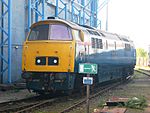 |
Static Display | Built at Swindon in 1963. It was preserved by the National Railway Museum. It arrived at Didcot in January 2023 on a 5-year loan. |
| GWR 18000 gas turbine | 18000 |  |
Static Display | Built in Switzerland in 1949. It arrived on July 29, 2011. It is owned by Pete Waterman. |
| British Railways Wickham trolley | B42W | 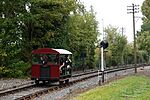 |
Operational | Built in 1956. This is a small vehicle used by railway workers for inspections. |
| Diesel Crane | CD24 | 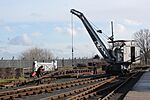 |
Operational | Built in 1949. |
Other Rolling Stock
The GWS has many other GWR carriages and wagons. This includes three of the special GWR Super Saloons that carried passengers to Plymouth for boat trips. There are also vehicles for staff and maintenance.
Carriages
| Type | Number (&Name) | Image | Status | Notes |
|---|---|---|---|---|
| Churchward Auto Trailer | No. 92 |  |
Restored to run with Steam Railmotor 93. | Built at Swindon, 1912. |
| Collett Auto Trailer | No. 190 |  |
Operational, needs some work. | Built at Swindon, 1933. |
| Hawksworth Auto Trailer | No. 231 |  |
Operational, needs some work. | Built at Swindon, 1951. |
| Bristol & Exeter Railway Broad Gauge Coach | No. 250 | Enough parts remain to rebuild a small section. | Built between 1852 & 1892. | |
| Dean 4w 1st 2nd Composite | No.290 | 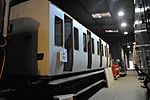 |
Restoration started in 2011. | Built at Swindon, 1902. |
| Dean 4w Brake Third | No. 416 |  |
Built at Swindon, 1891. | |
| Collett Third | No. 536 | 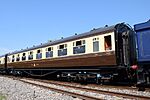 |
Operational. | Built at Swindon, 1940. |
| Dean 4-Wheel Third | No. 975 | 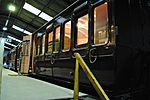 |
Restored. | Built at Swindon, 1902. It was restored to look like a Victorian train. |
| Collett Third | No. 1111 | No current plans for restoration. | Built at Swindon, 1938. | |
| Collett 'Excursion' Third | No. 1289 | 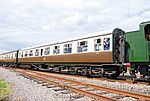 |
Built at Swindon, 1937. | |
| Dean 8 Compartment Third Clerestory | No. 1357 | Waiting for a major restoration. | Built at Swindon, 1903. | |
| Dean Third | No. 1941 |  |
Operational. | Built at Swindon, 1901. |
| Hawksworth Brake Third | No. 2202 |  |
Operational. | Built at Swindon, 1950. |
| Hawksworth Brake Third | No. 2232 | 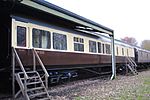 |
First restored as a staff locker room. | Built at Swindon, 1950. |
| Dean 6-wheel Family Saloon | No. 2511 | 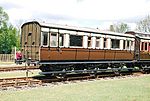 |
Operational. It was saved from a house and put on a train frame. | Built at Swindon, 1894. |
| Churchward “Dreadnought” 9 Compartment Third | No. 3299 | 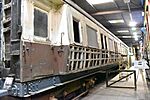 |
Major restoration started. | Built in 1905. One of the first coaches the society bought. |
| Churchward Non-Corridor Brake Third | No. 3755 | 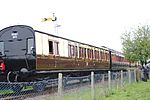 |
Restored and sometimes used. | Built at Swindon, 1921. |
| Churchward Non-Corridor Brake Third | No. 3756 | 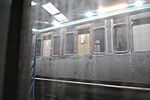 |
Under restoration. | Built at Swindon, 1921. |
| Churchward Toplight Corridor Third | No. 3963 | No current plans for restoration. | Built at Swindon, 1919. | |
| Collett Third - Bow Ended | No. 4553 |  |
No current plans for restoration. | Built at Swindon, 1925. |
| Collett 8 Compartment Bow-Ended Third | No. 5085 | Built at Swindon, 1928. | ||
| Collett Brake Third | No. 5787 | No current plans for restoration. | Built at Swindon, 1933. | |
| Collett All Third | No. 5952 |  |
No current plans for restoration. | Built at Swindon, 1935. |
| Dean 6-Wheel Tricomposite | No. 6824 | Stored on an LMS frame. | Built in 1887. It could be changed for wide-track use. | |
| Collett Composite | No. 7285 | 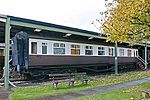 |
Built at Swindon, 1941. | |
| Collett Composite | No. 7313 |  |
Restored. | Built at Swindon, 1940. It has a wartime chocolate paint scheme. |
| Collett Brake Composite | No. 7371 | Under restoration. | Built at Swindon, 1941. | |
| Hawksworth Brake Composite | No. 7372 | 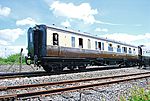 |
Operational. | Built at Swindon, 1948. |
| Collett Brake Composite | No. 7976 | Built at Swindon, 1923. | ||
| Collett Special Saloon | No. 9002 | 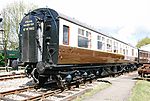 |
Operational. | Built at Swindon, 1940. Used by Winston Churchill and the Royal Family during WWII. |
| Hawksworth First Class Sleeping Car | No. 9083 | 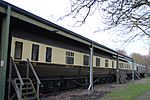 |
Operational. | Built at Swindon, 1951. |
| Collett Super Saloon | No. 9112 Queen Mary | No current plans for restoration. | Built at Swindon, 1932. | |
| Collett Super Saloon | No. 9113 Prince of Wales |  |
Under restoration. | Built at Swindon, 1932. |
| Collett Super Saloon | No. 9118 Princess Elizabeth | 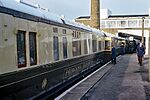 |
Built at Swindon, 1932. | |
| Dean Composite Diner | No. 9520 | No current plans for restoration. | ||
| Collett 'Centenary Diner' | No. 9635 | 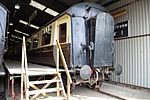 |
Built at Swindon, 1935. |
Broad Gauge Replica Carriages
Non-Passenger Carriages
These are carriages not used for carrying people.
Wagons
| Type | Number (&Name) | Image | Status | Notes |
|---|---|---|---|---|
| Tar Wagon | No. 1 | Needs to be restored again. | Built in 1898. | |
| 6w Drinking Water Tank | No. 101 |  |
Stored. | Built in 1948. |
| Department Mess Van | No. 263 | 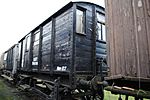 |
Used by staff. | Built in 1905. |
| Oil Tank Wagon | No. 795 | 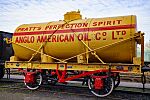 |
Restored. | Built in 1912. It is painted for "Anglo American Oil Co Ltd - Pratts Perfection Spirit". |
| 'Rotank' flat wagon carrying trailer tank | No. 3030 |  |
Restored. | Built in 1947. It is painted as a Simonds Beer tank. |
| Goods Van | No. 516673 | 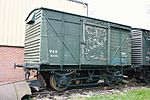 |
Restored, used for storage. | Used to be an LMS wagon. |
| Goods Van | No. 517791 | 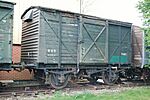 |
Restored, used for storage. | Used to be an LMS wagon. |
| Four wheel 7-plank mineral wagon | No. 10153 | 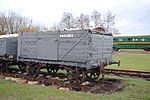 |
Restored. | Built by Gloucester RCW. It is the only surviving wagon from the Taff Vale Railway. |
| Iron Mink | No. 11152 |  |
Restored, not operational. | Built in 1900. |
| "Toad" Brake Van | No. 17447 |  |
Partially taken apart, stored. | Built in 1940. |
| 4 wheel 5-plank open wagon | No. 18553 | 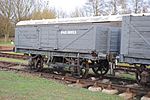 |
Operational. | Built in 1927. |
| "Open A" open wagon | No. 19818 |  |
Restored. | Built in 1917. |
| 'Mite' Single Bolsters | Nos. 32337 & 32338 | 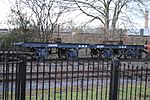 |
Not operational. | Built in 1881. |
| 'Coral A' crated glass wagon | No. 41723 | 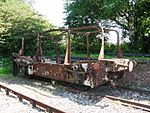 |
Waiting for restoration. | Built in 1908. |
| 20/21ton Loco Coal wagon | No. 63066 | 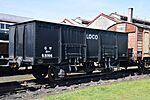 |
Restored. | Built in 1946. |
| 'Pollen E' | Nos 84997-85000 |  |
Restored, on loan from National Railway Museum. | Built in 1909. |
| 'Macaw B' bogie bolster wagon | No. 70335 |  |
Restored. | Built in 1939. |
| 'Crocodile F' bogie well trolley | No. 41934 |  |
Operational. | Built in 1908. Now rare. |
| 'Hydra D' machinery wagon | No. 42193 |  |
Stored outside. | Built in 1917. Now rare. |
| Grain Wagon | No. 42239 | 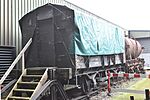 |
Stored, waiting for restoration. | Built in 1927. |
| 'Loriot L' machinery wagon | No. 42271 |  |
Operational. | Built in 1934. |
| Creosote Tank Wagon | No. 43949 |  |
Stored. | Built in 1901. |
| 16ton 'Toad' brake van | No. 56400 | 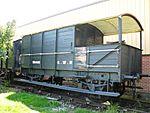 |
Used by staff. | Built in 1900. |
| 20ton 'Toad' brake van | No. 68684 | 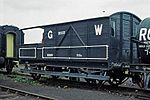 |
Restored. | Built in 1924. |
| 20ton 'Toad' brake van | No. 950592 | 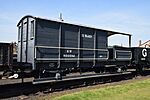 |
Restored. | Built in 1950. |
| Mink A ventilated van | No. 101720 |  |
Restored. | Built in 1924. |
| Mink A ventilated van | No. 101836 | 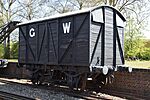 |
Restored. | Built in 1925. |
| Mink A ventilated van | No. 145428 | 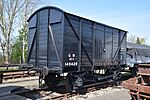 |
Restored. | Built in 1944. |
| Mink A ventilated van | No. W146366 | 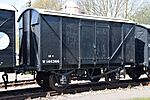 |
Restored. | Built in 1948. |
| Open A open wagon | No. 117993 | 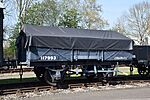 |
Restored. | Built in 1930. |
| Open C open wagon | No. 94835 | 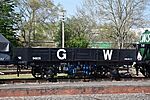 |
Restored. | Built in 1920. |
| Open wagon | No. 143698 | Built in 1945. | ||
| Clay wagon | No. 92943 | 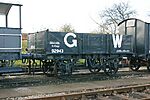 |
Restored. | Built in 1913. |
| 'Tevan' perishable traffic van | No. 79933 |  |
Restored. | Built in 1922. |
| 'Mica B' refigerated meat van | No. 105860 | Restored. | Built in 1925. | |
| "Fruit B" Banana Van | No. 1055993 | 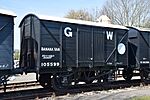 |
Restored. | Built in 1929. |
| 'Mogo' Motor Car Goods Van | No. 105742 |  |
Restored. | Built in 1936. |
| 'Asmo' Motor Car Van | No. 116954 | Built in 1930. | ||
| 'Cone' Gunpowder Van | No. 105781 | 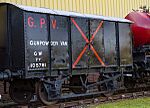 |
Restored. | Built in 1939. |
| Shunters' truck | No. 100377 | 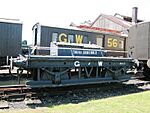 |
Operational. | Built in 1953. |
| Ballast wagon | No. 80659 | 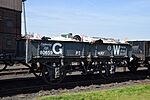 |
Operational. | Built in 1936. |
| Ballast wagon | No. 80668 | 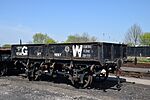 |
Operational. | Built in 1936. |
| Ballast wagon | No. 80789 |  |
Operational. | Built in 1937. |
| Chaired sleeper wagon | No. 100682 (GWS 91200) |  |
Operational. | Built in 1939. |
| Hand crane and match truck | No. 205 | 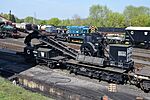 |
Restored, not operational. | Built in 1894. |
| Hand crane | No. 537 | 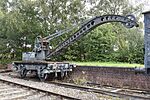 |
Restored, not operational. | Built in 1899. |
| Pooley mobile workshop van | No. 82917 |  |
Used by staff. | Built in 1911. |
| Demountable beer tank wagon, displayed as aircraft propeller wagon | No. B749039 | 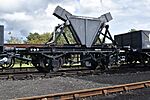 |
Restored, not operational. | Built in 1951. |
| 2 ft gauge slate wagon | No. 67 (?) |  |
Under restoration. | Built in 1903. |
See also
 In Spanish: Centro del Ferrocarril de Didcot para niños
In Spanish: Centro del Ferrocarril de Didcot para niños


